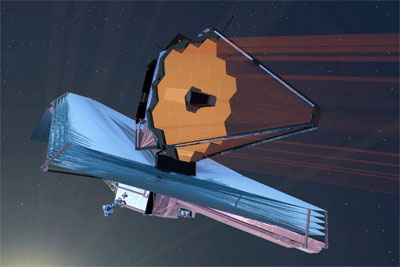Public interest and space explorationby Lou Friedman
|
| Space interest rests on scientific discovery and adventure. |
Public interest wasn’t just a flash in the pan: it has been sustained. NASA, as well as principal investigator Alan Stern and his New Horizons team, have done a very good job keeping the public informed about progress and milestones on the long (9.5 years) trip to Pluto. The controversy about Pluto’s planet classification has also spawned a number of popular books, the latest of which, How I Killed Pluto by Mike Brown, has recently been published (see “Review: How I Killed Pluto”, The Space Review, December 20, 2010). It follows Neil deGrasse Tyson’s 2009 book The Pluto Files. Both of these books are very personal accounts: rare for scientists, but good for public interest. They are very readable and interesting, full of stories. Brown goes into details about the search for Planet X and how data and then understanding about the new class of Kuiper Belt Objects developed. Tyson also provides scientific context, but adds a great deal of personal experience about the international attention he received when he (and his institution) removed Pluto from the list of planets at his planetarium exhibit. Cartoons, letters from kids, and even hate mail followed.
Space interest rests on scientific discovery and adventure. I have focused on the largely ground-based story behind the new classification of Pluto, but the New Horizons mission and the public interest in discoveries of extrasolar planets move this story into space. In many respects, our discoveries about planets are the public face of the space program. This is accentuated when the possibility of extraterrestrial life is raised. The Mars life possibility, which commanded the attention of President Clinton in 1996, illustrates that. The long-sustained public interest in the travels of Spirit and Opportunity demonstrate it as well.
I don’t mean to say that only planets excite the public imagination: Hubble’s remote probing of the universe became a people’s mission, so much so that when NASA considered abandoning it, popular interest prevented that from happening. I believe that the public is more scientifically curious and literate than is often assumed and that the possibilities of new discoveries about ourselves, other worlds, and the universe is what drives the space program. This even applies to the human space program, where I assert, based on 30 years leading the largest space interest group in the world, that the public perception is that humans are on a path outward to explore new worlds. Almost all of the popular talks I have given about planetary exploration have had a questioner in the audience ask either if humans were part of the existing Mars missions or when they would land there.
| But, even with the need for additional funding, the James Webb Space Telescope is still the right priority for astrophysics and astronomy. The end will justify the effort. |
As always (or, at least, as usual) I have a political point to make. The James Webb Space Telescope is significantly over budget, and its scheduled launch date is delayed. This is causing a big problem in space science and for NASA. It also is a political problem. As one Congressional aide put it to me two years ago in the context of Mars Science Laboratory (also delayed and over-budget), “we hate to be told just ‘suck it up,’ when this kind of problem emerges—even when that is the right answer.”
But the James Webb Space Telescope is an important project with significant public appeal so it is my view that “suck it up,” is the right answer, although NASA must take corrective management actions as well. The public interest in Hubble discoveries despite the early crisis of the defective mirror, and with the Mars Exploration Rovers despite the twin failures of Mars missions in 1999, demonstrates that they know exploring the unknown often will entail unknown problems. But exploring the unknown is the reason for NASA’s existence.
I don’t support writing blank checks to projects in trouble. And since I personally am advocating a new start on the Europa Jupiter System Mission, accelerated efforts on the Mars 2018 lander, and a start on Mars Sample Return (as well as a host of smaller missions with big goals), I am very concerned about the effect of the James Webb Space Telescope budget increase. But, even with the need for additional funding, the James Webb Space Telescope is still the right priority for astrophysics and astronomy. The end will justify the effort. Let’s be sure that public interest plays a strong role in considerations for political and financial support when determining NASA’s new budget.
